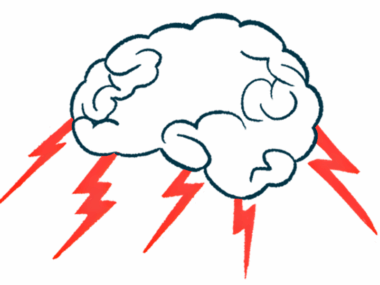Deep brain stimulation may reverse Parkinson’s-driving inflammation
New study provides insights into key driver of disease progression
Written by |

The use of deep brain stimulation — in which an electrode is surgically implanted in the brain — may hold promise to reverse inflammation, a key driver of Parkinson’s disease progression, according to a new study led by researchers in Germany.
“Deep brain stimulation halts inflammatory changes in Parkinson’s disease,” the team wrote, though the scientists noted that “further investigations are required to determine how [the procedure] … results in anti-inflammatory effects.”
The research also revealed that Parkinson’s patients usually have lower levels of lymphocytes, a critical immune cell, which not only correlates with motor symptoms but also predicts their future development.
The study, “Deep brain stimulation halts Parkinson’s disease-related immune dysregulation in the brain and peripheral blood,” was published in the journal Brain, Behavior, and Immunity.
Parkinson’s patients also found to have lower levels of lymphocytes
Inflammation is a complex biological and chemical process triggered by the body’s immune system to defend against infections. While inflammation plays a vital role in maintaining overall health, abnormal inflammation within the brain has been implicated as a key factor in the development and progression of Parkinson’s disease.
Aiming to gain greater insights into the role of inflammation in Parkinson’s, a team of scientists from the University Hospital of Würzburg in Germany, along with colleagues from the Krembil Research Institute in Canada, conducted analyses of data from the Parkinson’s Progression Marker Initiative (PPMI). PPMI is a large-scale study sponsored by The Michael J. Fox Foundation for Parkinson’s Research that monitors patient outcomes.
The researchers found that, compared with people who don’t have Parkinson’s, individuals with the disease tend to have lower levels of lymphocytes. These are a broad category of immune cells that includes T-cells, which are essential for fighting infection but also have been implicated in Parkinson’s-related abnormal inflammation.
Available data indicated that Parkinson’s patients who had lower levels of lymphocytes when they entered the PPMI study tended to have more severe motor symptoms after five years of monitoring. Moreover, lower levels of these immune cells could predict future motor symptom development, according to the researchers.
“These data indicate that lymphocyte levels can be a robust biomarker for the prediction of future clinical progression of [Parkinson’s],” the scientists wrote.
Higher lymphocyte levels seen for patients who’d had the procedure
Deep brain stimulation (DBS) involves surgically implanting an electrode, typically placed below the collarbone, to deliver stimulation to specific parts of a person’s brain. DBS is sometimes used to help manage Parkinson’s symptoms, and in the PPMI data, the researchers noted Parkinson’s patients who’d undergone DBS tended to have higher lymphocyte counts than those who hadn’t.
Intrigued by this finding, the researchers collected blood samples from a separate group of Parkinson’s patients — some of whom had undergone DBS and some of whom hadn’t — to look at their lymphocytes in more detail.
These results showed that, in Parkinson’s patients without DBS, levels of certain T-cells were dysregulated; specifically, Th17 cells, a type of T-cell that drives inflammation, were present at high levels, whereas regulatory T-cells, or Tregs, which act in an anti-inflammatory manner, were present at low levels. This collectively indicates a pro-inflammatory T-cell environment in those with Parkinson’s without DBS, according to the researchers.
However, in patients who had undergone DBS, the opposite trend was seen: Th17 cells were reduced while Tregs were increased. This implies that DBS may help to reverse the pro-inflammatory activity of immune cells in Parkinson’s patients.
These data further strengthen the hypothesis that DBS dampens neuroinflammation.
To further corroborate this idea, the researchers conducted a series of experiments in a rat model of Parkinson’s disease. In line with the human data, the results showed that applying DBS to the rats led to less inflammation in the brain, known as neuroinflammation.
“These data further strengthen the hypothesis that DBS dampens neuroinflammation,” the researchers wrote.
The team noted it’s not clear why immune cells become dysregulated in Parkinson’s, nor how DBS may act to reduce inflammatory activity. But better understanding these mechanisms could pave the way toward new Parkinson’s treatments, they said.







